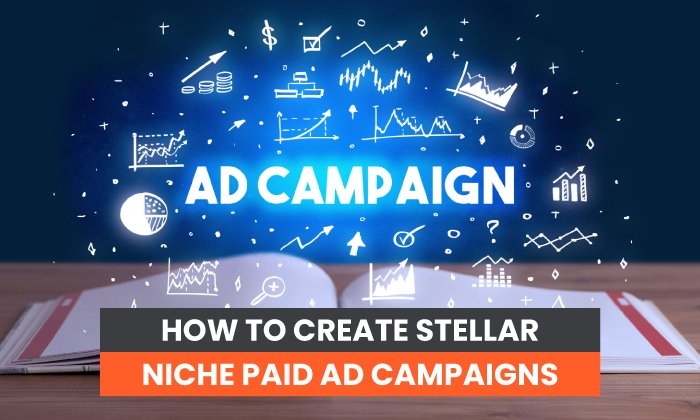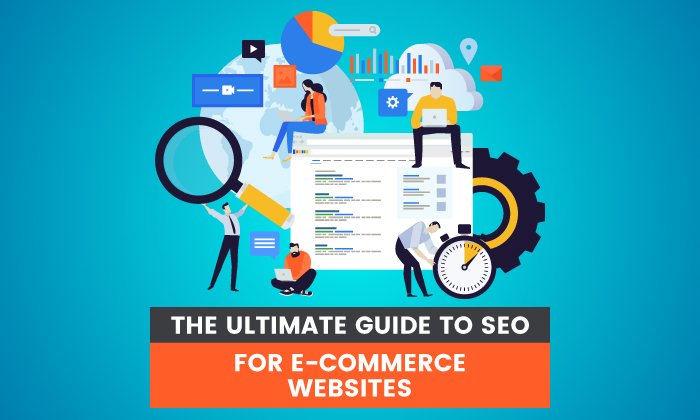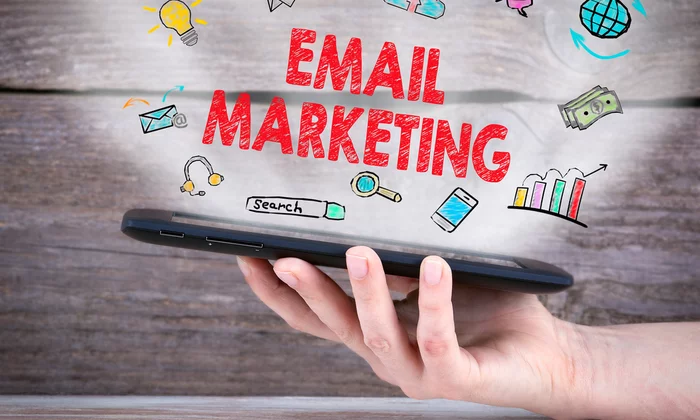MARKETING
5 Steps for Using Paid Internet Advertising to Drive Conversions

Paid advertising is a great way to guide more traffic to your site and increase business, but it can become expensive quickly — especially if you aren’t careful. How do you make sure you are getting the most out of your paid ads?
A few weeks ago, I was talking to a business owner in my community. They recently started an aggressive Google AdWords campaign that was working, sort of. They getting tons of new leads, but the leads were for services they didn’t offer! The problem was their campain was way too broad, and they were paying tons of cash for useless leads.
Don’t let that happen to you. Here are five simple things you can do to make sure you are getting the most for your paid ad dollars.
1. Understand (and Use) Long Tail Keywords
Longtail keywords are keywords that are several words long. Rather than targeting “plumber,” you might target “emergency plumber near me” or “plumber to unblock a drain.” These are critical because they are more likely to match the words searchers use and they also indicate the searcher is ready to hire or buy.
Ubersuggest is a great resource for discovering keywords in your industry.
When using Ubersuggest, remember that you aren’t necessarily looking for the highest-traffic keywords. You are looking for the words your customers use to look for you.
Be on the lookout for long-tail keywords that are longer, more specific keywords that make up the majority of search-driven traffic.
Here’s a simple system you can use:
Step #1: Enter Your Head Keyword and Click “Search”

Step #2: Click “Keyword Ideas” in the Left Sidebar
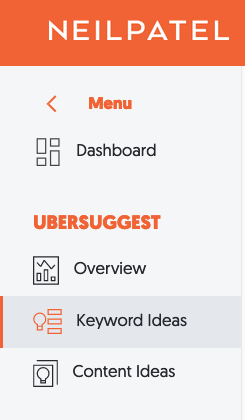
Step #3: Analyze the Results
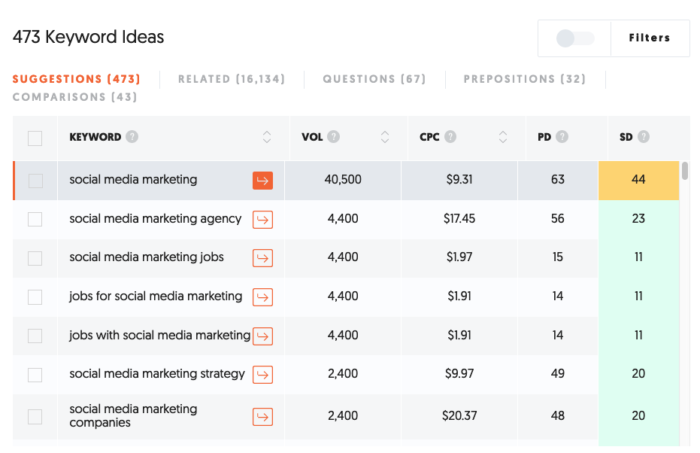
In the example above, the term “social media marketing” is considered a “head” keyword, which means it is searched for very frequently. The much less popular term “social media marketing strategy” receives fewer searches, but indicates the searcher is looking for something more specfic.
You might go even further and try something like “the best social media marketing strategy.”
To find even more keywords, click the “Related” tab next to “Suggestions.”
For this particular keyword, doing so gives you nearly 16,000 more keywords, the majority of which are long-tail. For example, here’s what you see as you scroll down the results:
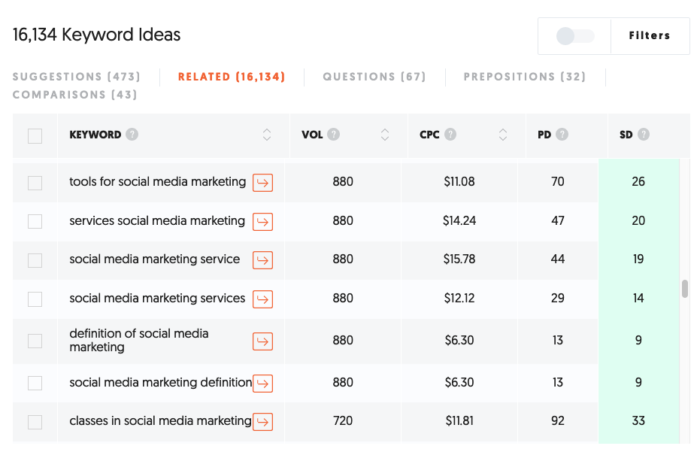
Once you find a long-tail keyword that piques your interest, click on it for a better idea of your competitors, both for paid ads and organic search.
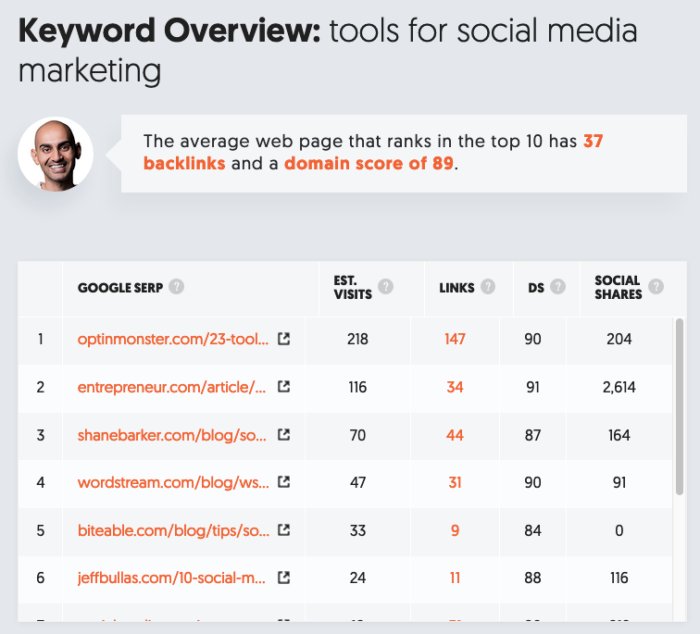
The big mistake that many first-time marketers make with SEO or pay-per-click advertising is choosing the wrong keywords.
When you purchase head keywords like “social media marketing,” you will spend significantly more money and reduce your ROI dramatically.
The key that you have to remember is you get a lot more bang for your buck by targeting a large number of lower-traffic terms than by targeting a small number of higher-traffic terms.
Finally, the best source of keywords can come from your own website. Consider using a survey tool like Qualaroo to find out what your customers are looking for or why they decided to do business with you (after checkout for example). The language they use can be very effective ad copy for internet advertisements.
2. Understand the Different Types of Paid Ads
There are a lot of places to buy ads and each platform has its own strengths and weaknesses. Before getting started, you should understand the major types of paid advertising as well as their pros and cons.
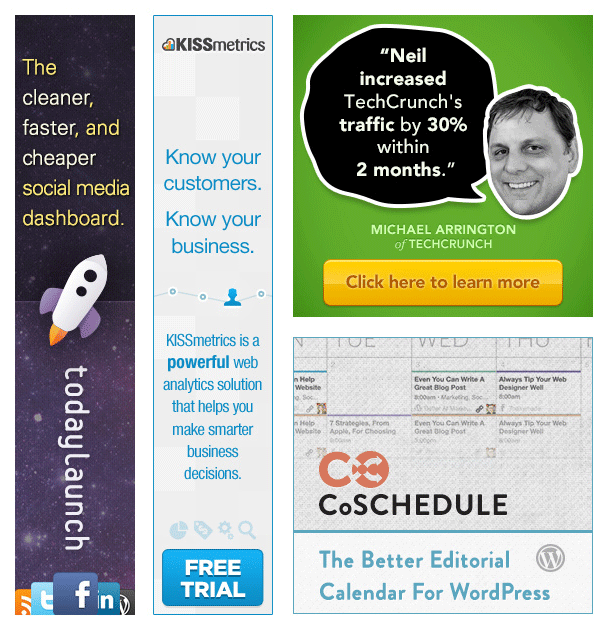
Display Ads or Banner Ads
Banner ads immediately come to mind when we think about online advertising because they stand out. They are very common and come in a variety of sizes. These ads can be effective, but they tend to target customers who are not actively looking for something new.
For example, a person may be reading a newspaper article and not be interested in a new social media course. Display ads can be successful, but they need to be used properly. Display ads can be purchased using a pay-per-click model or they simply can be displayed for a certain length of time.
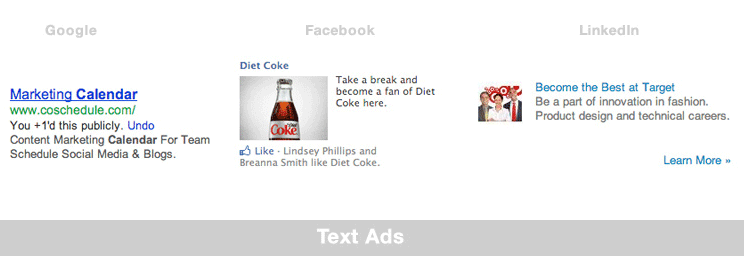
Text ads are the type you usually see on the primary Google search page. These ads generally are less expensive than display ads and target customers that actually are looking for something specific. They can be very effective but depend heavily on good keyword research and A/B testing (a topic we will discuss later in this post).
Here are a few of the places you should try listing your ads, though there certainly are many others:
Google Ads
Google Ads (previously Google AdWords) are an obvious choice for many businesses. They offer display and text ads in association with highly targeted keywords. AdWords are a clear choice for any campaign.
Bonus Tip: Your Google Adwords ads will produce a better return on investment the longer you use Adwords. Google rewards long-term customers with better “quality scores”.
Bing or Yahoo
Bing and Yahoo both offer alternative ad platforms that work similarly to Google’s. They combine display and text ads with targeted search terms. Some brands find that, while these options bring less traffic, the overall ROI is a bit better.
Social Media Ads
Social media advertising has grown enormously in popularity over the last few years. These ads combine text and display elements and are targeted based on user preferences, demographics, and location. Depending on your business type, Facebook, LinkedIn, Instagram, and TikTok are valid options to consider.
BuySellAds or Direct Buy
BuySellAds.com is a great place to go to find additional display ad opportunities. These usually allow you to “rent” space on a site or a blog for a fixed cost. Additional opportunities like this can exist if you contact some of your favorite bloggers directly.
Can’t decide between Facebook or Google (two popular options)? Then check out this video for some guidance:
Start by trying several of these options and use hard data to make final decisions about where you want to put your money. Rely on hard data, not guesses, to understand what platforms provide the best return.
3. Track Your Paid Ad Results
If you aren’t able to see how each of your ads is performing, then you shouldn’t be buying paid advertising at all. The beautiful thing about online advertising is that you get the opportunity to track everything. Google Analytics is an absolute must when it comes to online ad buying. This analytics package is free and easy to install.
Once you have it set up, you should become very familiar with Google Analytics Custom Campaigns. These options allow you to create a customized URL for each ad that will help you see overall performance for all of your advertising. Using Google Analytics in this way will give you a single dashboard for comparing all of your advertising campaigns.
4. Create a Landing Page
It is important to send incoming visitors to a unique page (called a landing page) on your website, rather than your homepage. This may seem counter-intuitive, but there are three very good reasons for using this strategy:
- Landing pages allow you to customize your message for incoming visitors. This means that you can continue the message you started with your ads, which creates a more cohesive experience.
- Custom landing pages allow you to push visitors toward specific actions, such as downloading a free ebook. (Displaying traditional navigation may distract your visitors.)
- Landing pages make tracking your visits very easy. This is especially important.
When you combine this strategy with easy funnel-tracking tools, you quickly can gain a lot of information about how to reach and sell to your new visitors.
In some cases, you can create a single landing page for an entire ad campaign. In other cases, you may want to create a specific landing page for each keyword that you purchase.
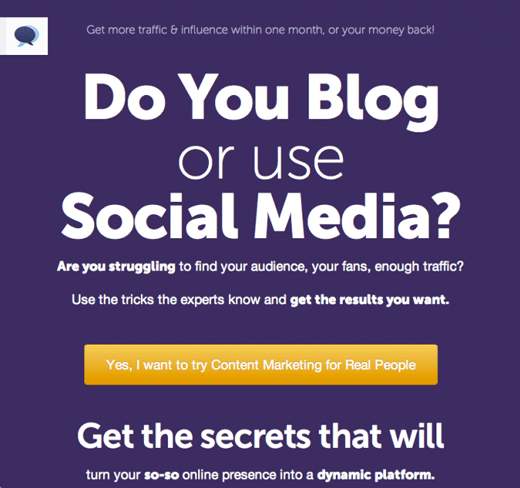
This landing page helps us track who comes to the page and exactly how effective our ads are.
It is important to remember to block your custom landing pages from search engines. This can be done with a simple edit to your “robots.txt” file. This is an important step that will make your ad tracking more reliable. If you allow Google and Bing to send non-paid visitors to your page, you may get a false sense of how your page is performing.
Here are two more tips to create high-converting landing pages.
Create a Call to Action
Once you have a visitor on your landing page, how do you convert them into a lead or a customer? Every page you send them to should have a clear call to action. Think about this one carefully, because it’s the difference between a sale and wasted money.
I like to decide what the “number one” desired outcome for each page is before I design a landing page. Simply ask yourself, “What do I want them to do the most?” Then create the page accordingly.

A good call to action will tell your visitors exactly what you want them to do.
Everything on your page should push your visitors toward the action you want them to take. Without considering this, you’re throwing money away.
Use A/B Testing
You may have launched your page, but you aren’t done yet. Small tweaks and adjustments can make a huge difference in your overall conversion rate. If you’ve followed the tips above, you should have the proper landing page and conversion tracking to make this task very easy.
A/B testing is being scientific about testing which methods work best. When you go about A/B testing, it is important that you make only a single, testable, change each time. For example, you could test the effectiveness of your page’s headline or button placement, but not both at the same time.
By testing a single change, you will be able to see conclusive results about what works best. A/B testing is an ongoing process, too, so don’t stop. Keep testing and modifying your page. You might be surprised at what it does to your overall conversion rate.
5. Review Your Paid Ad Results Regularly
Whatever you do, don’t look at your results every day. This practice can lead to hasty changes based on incomplete data. It is best to wait so that your analytics have time to accumulate accurate trends and information. Then determine a set time period for reviewing your statistics and making changes. It might be monthly, it might be weekly. Checking monthly is a good plan for picking up broad shifts.
Consider setting up spreadsheets to track your statistics. It’s easier to pick up on trends and understand what you’re seeing when you dig into your analytics to pull out the numbers for your spreadsheet.

Use simple spreadsheets to track your incoming ad traffic.
Be prepared to kill keywords that are under-performing. Remember, conversion rates are your most important statistics, not clicks. Clicks just waste money if they aren’t driving leads or sales.
In paid advertising, the longer you run your ads, the better your rates and quality score will become. This will be true particularly if you rely heavily on good A/B testing and are constantly refining your ad buy.
5 Steps to Getting Started with Paid Ads
Time needed: 6 minutes.
Not sure how to get started with paid ads? Here’s five steps to make sure you don’t waste your investment.
- Understand (and Use) Long Tail Keywords
Long tail keywords are less competitive and mimic the way people search.
- Understand the Different Types of Paid Ads
Each type of ad has different costs, audiences, and reaches. Understand the difference so you don’t waste ad spend!
- Track Your Paid Ad Results
If you aren’t able to see how each of your ads is performing, then you shouldn’t be buying paid advertising at all. T
- Create a Landing Page
Landing pages help drive conversions and make it easier to track. Don’t forget to add a CTA and use A/B testing.
- Review Your Paid Ad Results Regularly
Check your results weekly or monthly to make sure your ads are driving results, not just clicks.
Conclusion
Paid ads are not a get-rich-quick scheme. Don’t expect to be finished in a week or two. Give your ads time and finesse your plan to get the best results. Cumulative trends and information will give you a clearer picture of which ads actually convert.
Start by setting a small budget, and increase it as you gain confidence. If you need help getting started, feel free to reach out to my team. We can help create an advertising plan that works for your business.
Are you considering adding paid ads to your online advertising strategy? What is holding you back?
See How My Agency Can Drive Massive Amounts of Traffic to Your Website
- SEO – unlock massive amounts of SEO traffic. See real results.
- Content Marketing – our team creates epic content that will get shared, get links, and attract traffic.
- Paid Media – effective paid strategies with clear ROI.
MARKETING
18 Events and Conferences for Black Entrepreneurs in 2024

Welcome to Breaking the Blueprint — a blog series that dives into the unique business challenges and opportunities of underrepresented business owners and entrepreneurs. Learn how they’ve grown or scaled their businesses, explored entrepreneurial ventures within their companies, or created side hustles, and how their stories can inspire and inform your own success.
It can feel isolating if you’re the only one in the room who looks like you.
MARKETING
IAB Podcast Upfront highlights rebounding audiences and increased innovation
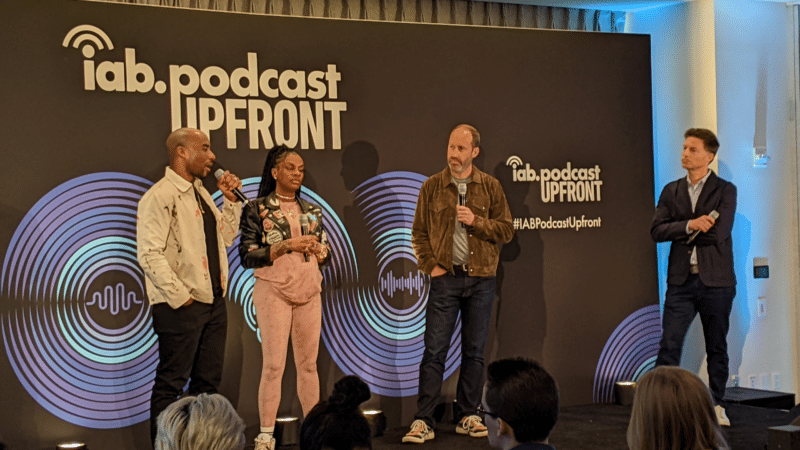
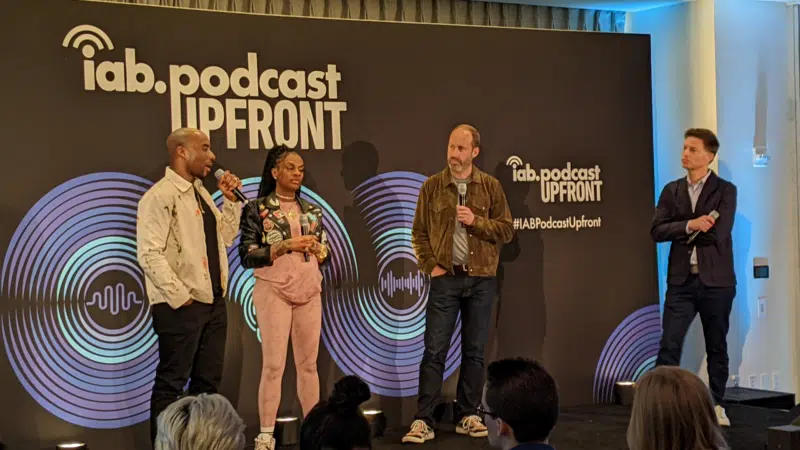
Podcasts are bouncing back from last year’s slowdown with digital audio publishers, tech partners and brands innovating to build deep relationships with listeners.
At the IAB Podcast Upfront in New York this week, hit shows and successful brand placements were lauded. In addition to the excitement generated by stars like Jon Stewart and Charlamagne tha God, the numbers gauging the industry also showed promise.
U.S. podcast revenue is expected to grow 12% to reach $2 billion — up from 5% growth last year — according to a new IAB/PwC study. Podcasts are projected to reach $2.6 billion by 2026.
The growth is fueled by engaging content and the ability to measure its impact. Adtech is stepping in to measure, prove return on spend and manage brand safety in gripping, sometimes contentious, environments.
“As audio continues to evolve and gain traction, you can expect to hear new innovations around data, measurement, attribution and, crucially, about the ability to assess podcasting’s contribution to KPIs in comparison to other channels in the media mix,” said IAB CEO David Cohen, in his opening remarks.
Comedy and sports leading the way
Podcasting’s slowed growth in 2023 was indicative of lower ad budgets overall as advertisers braced for economic headwinds, according to Matt Shapo, director, Media Center for IAB, in his keynote. The drought is largely over. Data from media analytics firm Guideline found podcast gross media spend up 21.7% in Q1 2024 over Q1 2023. Monthly U.S. podcast listeners now number 135 million, averaging 8.3 podcast episodes per week, according to Edison Research.
Comedy overtook sports and news to become the top podcast category, according to the new IAB report, “U.S. Podcast Advertising Revenue Study: 2023 Revenue & 2024-2026 Growth Projects.” Comedy podcasts gained nearly 300 new advertisers in Q4 2023.
Sports defended second place among popular genres in the report. Announcements from the stage largely followed these preferences.
Jon Stewart, who recently returned to “The Daily Show” to host Mondays, announced a new podcast, “The Weekly Show with Jon Stewart,” via video message at the Upfront. The podcast will start next month and is part of Paramount Audio’s roster, which has a strong sports lineup thanks to its association with CBS Sports.
Reaching underserved groups and tastes
IHeartMedia toasted its partnership with radio and TV host Charlamagne tha God. Charlamagne’s The Black Effect is the largest podcast network in the U.S. for and by black creators. Comedian Jess Hilarious spoke about becoming the newest co-host of the long-running “The Breakfast Club” earlier this year, and doing it while pregnant.
The company also announced a new partnership with Hello Sunshine, a media company founded by Oscar-winner Reese Witherspoon. One resulting podcast, “The Bright Side,” is hosted by journalists Danielle Robay and Simone Boyce. The inspiration for the show was to tell positive stories as a counterweight to negativity in the culture.
With such a large population listening to podcasts, advertisers can now benefit from reaching specific groups catered to by fine-tuned creators and topics. As the top U.S. audio network, iHeartMedia touted its reach of 276 million broadcast listeners.
Connecting advertisers with the right audience
Through its acquisition of technology, including audio adtech company Triton Digital in 2021, as well as data partnerships, iHeartMedia claims a targetable audience of 34 million podcast listeners through its podcast network, and a broader audio audience of 226 million for advertisers, using first- and third-party data.
“A more diverse audience is tuning in, creating more opportunities for more genres to reach consumers — from true crime to business to history to science and culture, there is content for everyone,” Cohen said.
The IAB study found that the top individual advertiser categories in 2023 were Arts, Entertainment and Media (14%), Financial Services (13%), CPG (12%) and Retail (11%). The largest segment of advertisers was Other (27%), which means many podcast advertisers have distinct products and services and are looking to connect with similarly personalized content.
Acast, the top global podcast network, founded in Stockholm a decade ago, boasts 125,000 shows and 400 million monthly listeners. The company acquired podcast database Podchaser in 2022 to gain insights on 4.5 million podcasts (at the time) with over 1.7 billion data points.
Measurement and brand safety
Technology is catching up to the sheer volume of content in the digital audio space. Measurement company Adelaide developed its standard unit of attention, the AU, to predict how effective ad placements will be in an “apples to apples” way across channels. This method is used by The Coca-Cola Company, NBA and AB InBev, among other big advertisers.
In a study with National Public Media, which includes NPR radio and popular podcasts like the “Tiny Desk” concert series, Adelaide found that NPR, on average, scored 10% higher than Adelaide’s Podcast AU Benchmarks, correlating to full-funnel outcomes. NPR listeners weren’t just clicking through to advertisers’ sites, they were considering making a purchase.
Advertisers can also get deep insights on ad effectiveness through Wondery’s premium podcasts — the company was acquired by Amazon in 2020. Ads on its podcasts can now be managed through the Amazon DSP, and measurement of purchases resulting from ads will soon be available.
The podcast landscape is growing rapidly, and advertisers are understandably concerned about involving their brands with potentially controversial content. AI company Seekr develops large language models (LLMs) to analyze online content, including the context around what’s being said on a podcast. It offers a civility rating that determines if a podcast mentioning “shootings,” for instance, is speaking responsibly and civilly about the topic. In doing so, Seekr adds a layer of confidence for advertisers who would otherwise pass over an opportunity to reach an engaged audience on a topic that means a lot to them. Seekr recently partnered with ad agency Oxford Road to bring more confidence to clients.
“When we move beyond the top 100 podcasts, it becomes infinitely more challenging for these long tails of podcasts to be discovered and monetized,” said Pat LaCroix, EVP, strategic partnerships at Seekr. “Media has a trust problem. We’re living in a time of content fragmentation, political polarization and misinformation. This is all leading to a complex and challenging environment for brands to navigate, especially in a channel where brand safety tools have been in the infancy stage.”
Dig deeper: 10 top marketing podcasts for 2024
MARKETING
Foundations of Agency Success: Simplifying Operations for Growth


Why do we read books like Traction, Scaling Up, and the E-Myth and still struggle with implementing systems, defining processes, and training people in our agency?
Those are incredibly comprehensive methodologies. And yet digital agencies still suffer from feast or famine months, inconsistent results and timelines on projects, quality control, revisions, and much more. It’s not because they aren’t excellent at what they do. I
t’s not because there isn’t value in their service. It’s often because they haven’t defined the three most important elements of delivery: the how, the when, and the why.
Complicating our operations early on can lead to a ton of failure in implementing them. Business owners overcomplicate their own processes, hesitate to write things down, and then there’s a ton of operational drag in the company.
Couple that with split attention and paper-thin resources and you have yourself an agency that spends most of its time putting out fires, reacting to problems with clients, and generally building a culture of “the Founder/Creative Director/Leader will fix it” mentality.
Before we chat through how truly simple this can all be, let’s first go back to the beginning.
When we start our companies, we’re told to hustle. And hustle hard. We’re coached that it takes a ton of effort to create momentum, close deals, hire people, and manage projects. And that is all true. There is a ton of work that goes into getting a business up and running.


The challenge is that we all adopt this habit of burning the candle at both ends and the middle all for the sake of growing the business. And we bring that habit into the next stage of growth when our business needs… you guessed it… exactly the opposite.
In Mike Michalowitz’s book, Profit First he opens by insisting the reader understand and accept a fundamental truth: our business is a cash-eating monster. The truth is, our business is also a time-eating monster. And it’s only when we realize that as long as we keep feeding it our time and our resources, it’ll gobble everything up leaving you with nothing in your pocket and a ton of confusion around why you can’t grow.
Truth is, financial problems are easy compared to operational problems. Money is everywhere. You can go get a loan or go create more revenue by providing value easily. What’s harder is taking that money and creating systems that produce profitably. Next level is taking that money, creating profit and time freedom.
In my bestselling book, The Sabbatical Method, I teach owners how to fundamentally peel back the time they spend in their company, doing everything, and how it can save owners a lot of money, time, and headaches by professionalizing their operations.
The tough part about being a digital agency owner is that you likely started your business because you were great at something. Building websites, creating Search Engine Optimization strategies, or running paid media campaigns. And then you ended up running a company. Those are two very different things.


How to Get Out of Your Own Way and Create Some Simple Structure for Your Agency…
- Start Working Less
I know this sounds really brash and counterintuitive, but I’ve seen it work wonders for clients and colleagues alike. I often say you can’t see the label from inside the bottle and I’ve found no truer statement when it comes to things like planning, vision, direction, and operations creation.
Owners who stay in the weeds of their business while trying to build the structure are like hunters in the jungle hacking through the brush with a machete, getting nowhere with really sore arms. Instead, define your work day, create those boundaries of involvement, stop working weekends, nights and jumping over people’s heads to solve problems.
It’ll help you get another vantage point on your company and your team can build some autonomy in the meantime.
- Master the Art of Knowledge Transfer
There are two ways to impart knowledge on others: apprenticeship and writing something down. Apprenticeship began as a lifelong relationship and often knowledge was only retained by ONE person who would carry on your method.
Writing things down used to be limited (before the printing press) to whoever held the pages.
We’re fortunate that today, we have many ways of imparting knowledge to our team. And creating this habit early on can save a business from being dependent on any one person who has a bunch of “how” and “when” up in their noggin.
While you’re taking some time to get out of the day-to-day, start writing things down and recording your screen (use a tool like loom.com) while you’re answering questions.


Deposit those teachings into a company knowledge base, a central location for company resources. Some of the most scaleable and sellable companies I’ve ever worked with had this habit down pat.
- Define Your Processes
Lean in. No fancy tool or software is going to save your company. Every team I’ve ever worked with who came to me with a half-built project management tool suffered immensely from not first defining their process. This isn’t easy to do, but it can be simple.
The thing that hangs up most teams to dry is simply making decisions. If you can decide how you do something, when you do it and why it’s happening that way, you’ve already won. I know exactly what you’re thinking: our process changes all the time, per client, per engagement, etc. That’s fine.
Small businesses should be finding better, more efficient ways to do things all the time. Developing your processes and creating a maintenance effort to keep them accurate and updated is going to be a liferaft in choppy seas. You’ll be able to cling to it when the agency gets busy.
“I’m so busy, how can I possibly work less and make time for this?”


You can’t afford not to do this work. Burning the candle at both ends and the middle will catch up eventually and in some form or another. Whether it’s burnout, clients churning out of the company, a team member leaving, some huge, unexpected tax bill.
I’ve heard all the stories and they all suck. It’s easier than ever to start a business and it’s harder than ever to keep one. This work might not be sexy, but it gives us the freedom we craved when we began our companies.
Start small and simple and watch your company become more predictable and your team more efficient.
-

 PPC6 days ago
PPC6 days agoHow the TikTok Algorithm Works in 2024 (+9 Ways to Go Viral)
-

 SEO5 days ago
SEO5 days agoHow to Use Keywords for SEO: The Complete Beginner’s Guide
-

 SEO7 days ago
SEO7 days agoBlog Post Checklist: Check All Prior to Hitting “Publish”
-

 MARKETING6 days ago
MARKETING6 days agoHow To Protect Your People and Brand
-

 SEARCHENGINES7 days ago
SEARCHENGINES7 days agoGoogle Started Enforcing The Site Reputation Abuse Policy
-

 PPC7 days ago
PPC7 days agoHow to Craft Compelling Google Ads for eCommerce
-

 MARKETING7 days ago
MARKETING7 days agoElevating Women in SEO for a More Inclusive Industry
-

 PPC7 days ago
PPC7 days agoHow to Brainstorm Business Ideas: 9 Fool-Proof Approaches





